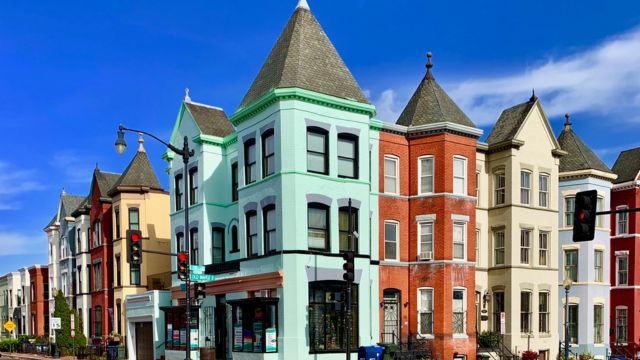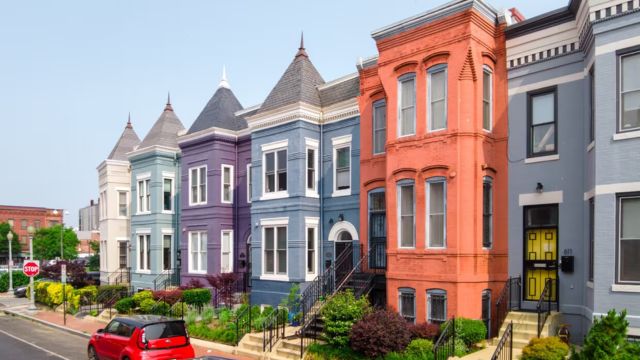Discover the 5 Most Dangerous Neighborhoods in Le Droit Park, Washington D.C.
The diversified neighborhood of Le Droit Park, tucked away in Washington, D.C., has a rich history. On the other hand, there are places in this lively neighborhood that have safety issues and high rates of crime. Investigating these communities reveals issues that need to be addressed to create a safer Le Droit Park.
Top 5 Most Dangerous Neighborhoods in Le Droit Park
1. Bloomington
Despite continuous attempts, attacks involving property and sporadic violent episodes are the city’s main concerns. Though they still focus on safety issues, community-driven projects aim to improve this area.
2. Laurel Hill
Read More: Discover the 5 Most Dangerous Neighborhoods in Rockford, Illinois
Needing specific interventions, Laurel Hill faces issues with drug-related offenses and sporadic disruptions. Improving safety here requires cooperative initiatives that prioritize resource allocation and community involvement.
3. Fairview

Fairview is a neighborhood that is close to busy intersections and struggles with a range of criminal activity, such as theft and violent episodes that happen occasionally. Improving local resources and establishing ties between the police and the community are crucial first steps.
4. Pinehurst
Because of ongoing safety issues, such as drug-related occurrences and property crimes, Pinehurst has significant challenges despite its historical value. Positive transformation necessitates long-term tactics including community empowerment and thorough remodeling plans.
5. Greenville
Greenville looks for cooperative methods to deal with sporadic violent occurrences and property crimes. To make the environment safer, it is essential to implement community-focused programs, improve security, and create job possibilities.
These communities are resilient and work toward positive change, even while they face safety challenges. To solve these issues and improve these regions, local groups, the police, and community leaders are working hard.
Main Elements Influencing the Development of Le Droit Park
Washington, D.C.’s Le Droit Park is a historic neighborhood that has evolved throughout time due to a variety of causes that have molded the neighborhood’s general development and community dynamics. Comprehending these variables illuminates the neighborhood’s historical background, current difficulties, and possible future directions.
1. Historical Significance
Originally planned as a wealthy suburban community in the late 1800s, Le Droit Park has a long and illustrious past. Its identity is shaped by its historical significance as one of the earliest communities in Washington, D.C., with paved streets and tasteful residences.
2. Community Resilience and Diversity

Le Droit Park’s diverse population, which includes a range of people from various origins and cultures, is one of its most distinctive features. The liveliness of the community is attributed to its resilience and capacity to embrace its variety.
3. Socio-Economic Dynamics
Read More: Discover the 5 Most Dangerous Neighborhoods in Greensbriar, Detroit, MI, USA
The neighborhood’s environment is greatly influenced by socio-economic elements. Inequalities within the community are influenced by access to resources, housing affordability, and income discrepancies, which also have an impact on inhabitants’ day-to-day lives.
4. Gentrification and Urban Renewal
Le Droit Park, like many other metropolitan districts, has experienced both urban redevelopment and gentrification. The socioeconomic makeup of the area has changed as a result of redevelopment initiatives, fluctuations in property values, and migration.
5. Public Safety and Crime
The dynamics of the neighborhood have been influenced by worries about public safety and the prevalence of crime. Certain areas of Le Droit Park may have greater crime rates than others, which could affect locals’ feelings of security.
Conclusion
In the end, to make Le Droit Park a safer and more successful place for all of its people, resolving safety concerns in these communities calls for cooperation from local authorities, organizations, and residents.
Infrastructure upgrades, neighborhood watch programs, community policing initiatives, investment in education and employment possibilities, and other tactics are necessary to improve safety and promote good change.
Gaining an understanding of these neighborhoods is essential, not to stigmatize but to recognize the problems already there and mobilize support for programs that advance community involvement, safety, and holistic development.
